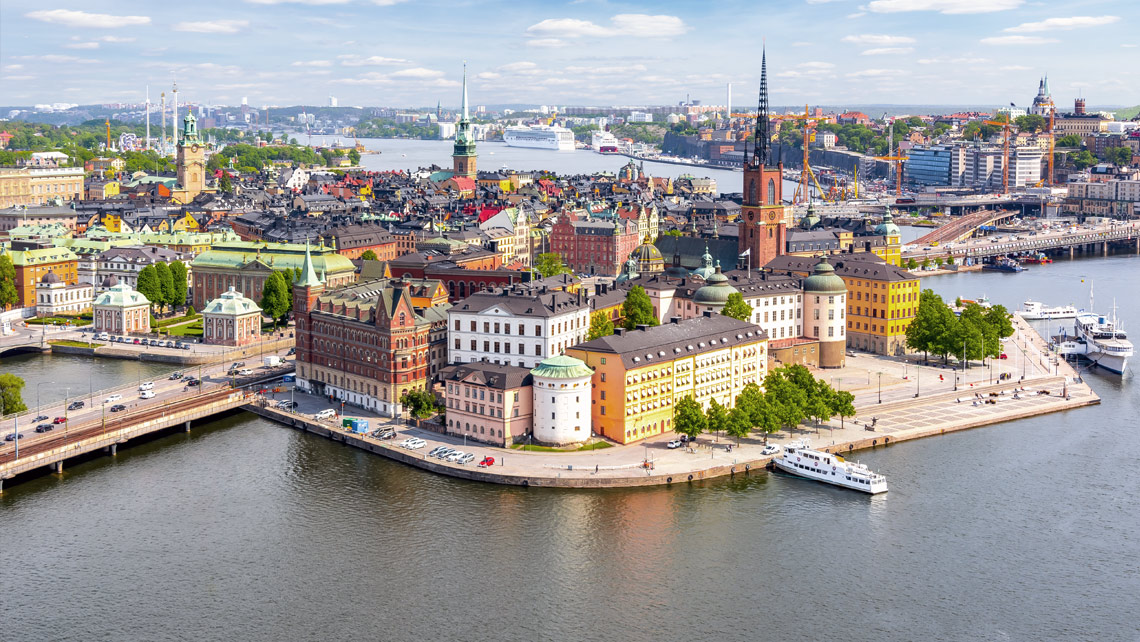Pushing wastewater treatment capacity limits at Stockholm Water

m³ wastewater treated every day
m³ drinking water produced daily
people served in Stockholm
Stockholm Vatten och Avfall (Stockholm Water) processes the wastewater of Sweden’s capital and provides its people and businesses with clean, fresh drinking water. The wastewater processing falls to the city’s two treatment plants, at Bromma and Henriksdal, which together handle over 350,000 m3 of wastewater every day.
We needed to find a way to expand the treatment capacity without heavy infrastructure investment.
With capacity at the Henriksdal plant limited because of an ongoing upgrade to the membrane bioreactor (MBR) treatment technology and the Bromma plant due to be closed once the upgrade is complete, Stockholm Water was facing a tough challenge. How to maintain overall capacity and ensure the quality of wastewater treatment during the upgrade without investing heavily in expanding capacity at a plant with limited remaining lifespan?
“We are having to close parts of the biological treatment in stages at Henriksdal during the upgrade. At the same time, the load on Bromma is going to increase, and the two plants have joined effluent restrictions. The Bromma plant already serves a population of over 360,000, and we expect this to rise by 42,000 between 2015 and 2024,” says Elin Larsson, project leader, wastewater treatment plants. “Common effluent restrictions, joined with the limited capacity at Henriksdal, means cutting emission levels at Bromma while increasing capacity.”
“As Bromma will be closed once the upgrade at Henriksdal is complete, we needed to find a way to expand the treatment capacity without heavy infrastructure investment, and this is why we decided to go with chemical pre-treatment,” Elin continues.
Several studies have shown that chemical pre-treatment brings significant efficiencies in terms of both regulatory compliance and cost reductions.
A cost-effective way to expand capacity
Kemira and Stockholm Water began collaborating on the project during the chemical testing and selection process in 2019.
“Several studies and real-life examples have shown that chemical pre-treatment brings significant efficiencies in terms of both regulatory compliance and cost reductions. It reduces the organic load on the downstream biological process, enabling operators to expand plant capacity at a relatively low cost. It is also a highly efficient way to remove phosphorus from wastewater, which can cut a treatment plant’s energy consumption and, by extension, its CO2 footprint,” says Bengt Hansen, Manager Application development at Kemira.
“Chemical pre-treatment will help to take some of the load off the biological process at Bromma, which is currently experiencing a high excess sludge production. This results in reduced sludge age, which means that nitrification may be very limited or completely diminished during cold periods. If this happens, nitrogen emissions will increase significantly, and that could mean financial penalties for exceeding effluent limits. Furthermore, the process we currently use takes capacity away from the biological treatment process; changing to chemical pre-treatment will help to address this problem,” Elin explains.
The results clearly demonstrated that the pre-treatment process would be able to provide the capacity increase that was needed at Bromma.
Collaboration founded on openness and transparency
In early 2019 Stockholm Water began trials of two pre-treatment products – one iron based and one aluminum based – working hand in hand with Kemira to evaluate the results and fine-tune the process parameters. The results clearly demonstrated that the pre-treatment process would be able to provide the capacity increase that was needed at Bromma. It is also hoped that the chemical pre-treatment will boost the amount of biogas – a valuable renewable fuel source for buses and cars – generated during the sludge digestion process at Bromma.
“We have really appreciated the approach that Kemira has taken in this project right from the start,” highlights Elin. “We had regular weekly meetings to discuss results and how to fine tune things like the dosing points and amounts of product required. Their expertise and intimate knowledge of our wastewater treatment process was invaluable in this regard. Furthermore, they offer a fantastic level of flexibility in terms of chemical deliveries, which has helped us to optimize our limited on-site storage capacity.”

Watch our on-demand webinar
